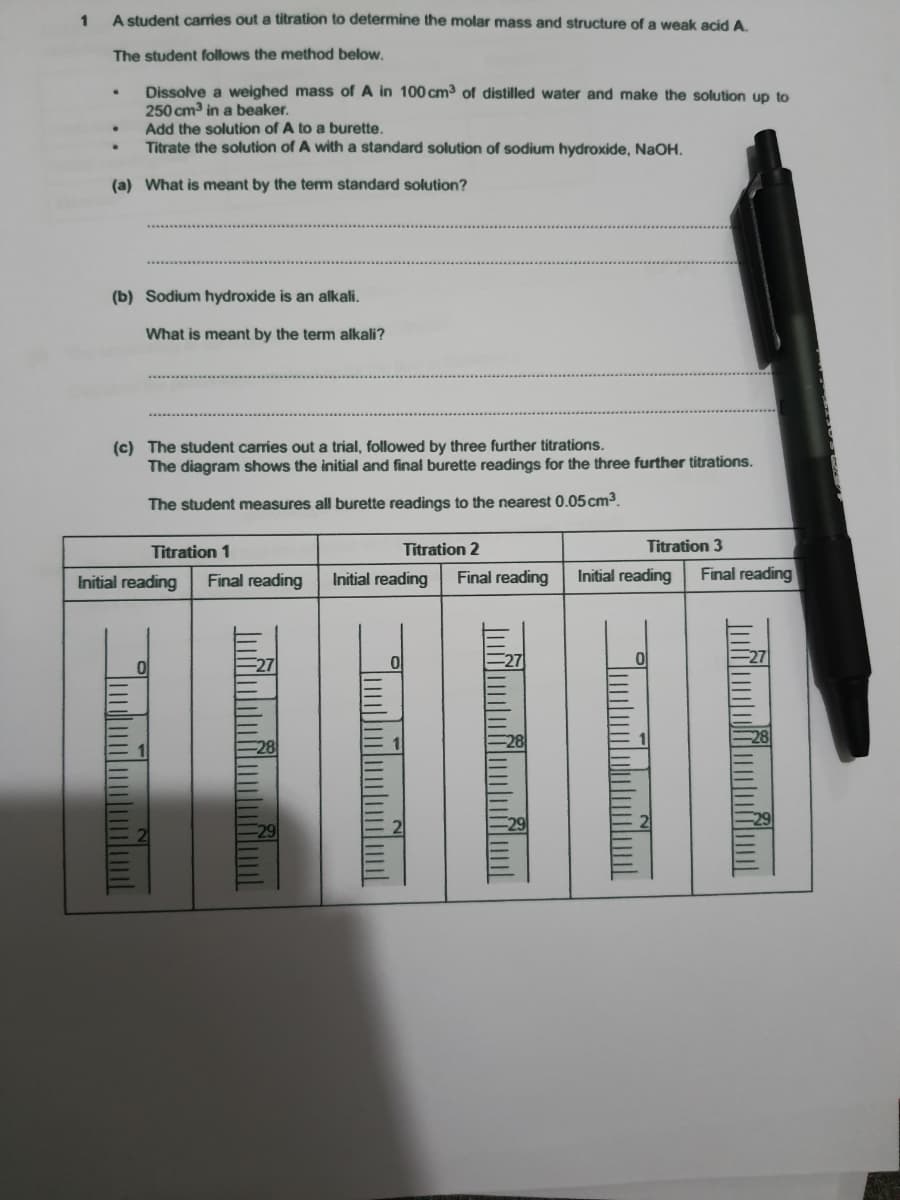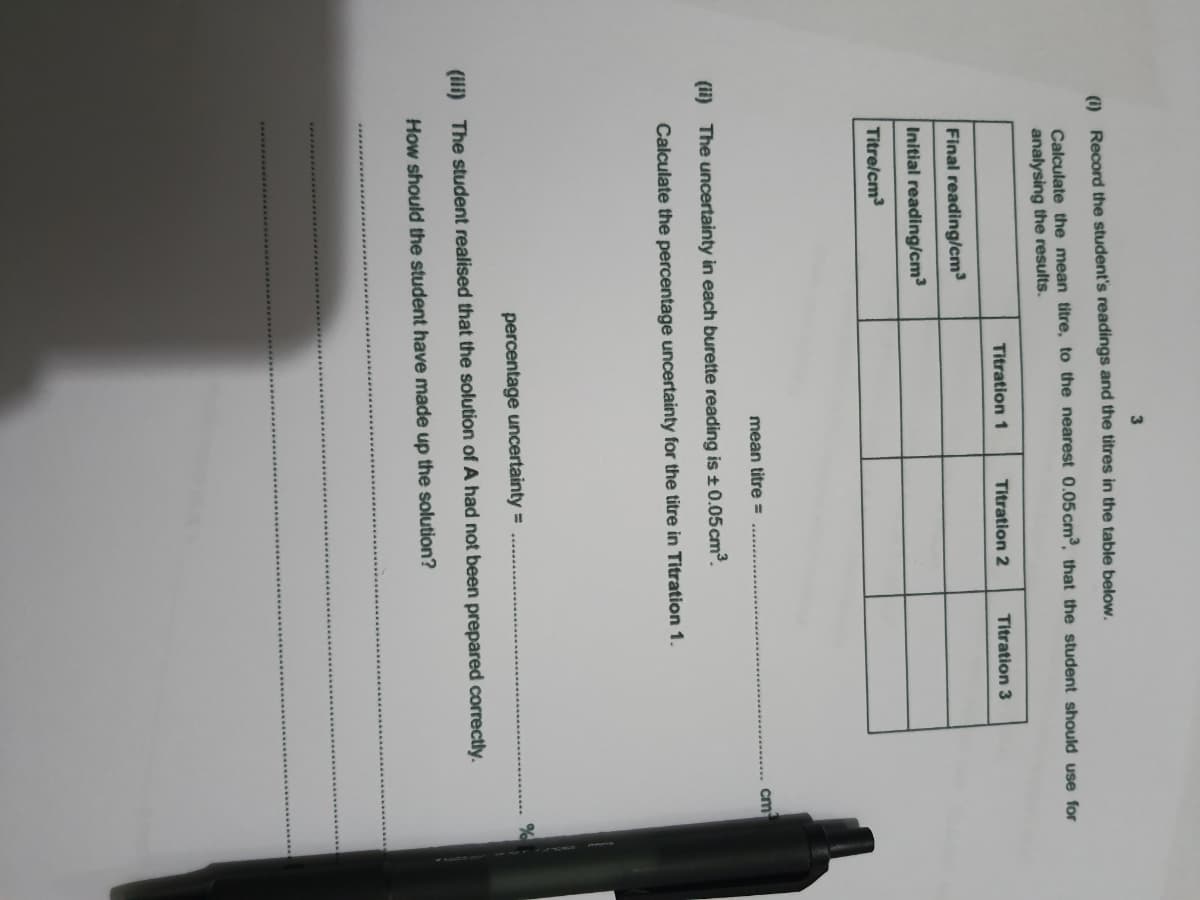1 A student carries out a titration to determine the molar mass and structure of a weak acid A. The student follows the method below. Dissolve a weighed mass of A in 100 cm3 of distilled water and make the solution up to 250 cm in a beaker. Add the solution of A to a burette. Titrate the solution of A with a standard solution of sodium hydroxide, NAOH. (a) What is meant by the tem standard solution? .*** ......................... .**** (b) Sodium hydroxide is an alkali. What is meant by the term alkali? (c) The student carries out a trial, followed by three further titrations. The diagram shows the initial and final burette readings for the three further titrations. The student measures all burette readings to the nearest 0.05cm3. Titration 1 Titration 2 Titration 3 Initial reading Final reading Initial reading Final reading Initial reading Final reading F27 27 27 28 28 28 29 29 29
Ionic Equilibrium
Chemical equilibrium and ionic equilibrium are two major concepts in chemistry. Ionic equilibrium deals with the equilibrium involved in an ionization process while chemical equilibrium deals with the equilibrium during a chemical change. Ionic equilibrium is established between the ions and unionized species in a system. Understanding the concept of ionic equilibrium is very important to answer the questions related to certain chemical reactions in chemistry.
Arrhenius Acid
Arrhenius acid act as a good electrolyte as it dissociates to its respective ions in the aqueous solutions. Keeping it similar to the general acid properties, Arrhenius acid also neutralizes bases and turns litmus paper into red.
Bronsted Lowry Base In Inorganic Chemistry
Bronsted-Lowry base in inorganic chemistry is any chemical substance that can accept a proton from the other chemical substance it is reacting with.


Trending now
This is a popular solution!
Step by step
Solved in 3 steps




